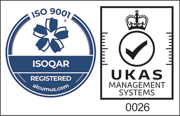The goal of accelerating discovery, development, and delivery of new products in the Pharmaceutical and allied industries is continual. In recent times significant effort has been made to reduce the scale at which research and development (R&D) is possible.
This approach, often facilitated by innovative technologies and methodologies, offers numerous advantages that enhance efficiency, speed of development, cost-effectiveness, safety, environmental sustainability and innovation in formulation development.
Cost Reduction
One of the most significant advantages of using small quantities of material, is the substantial reduction in costs that can be realised. Formulation development is the process of selection and optimisation of the delivery method for the active pharmaceutical ingredients (APIs). Whatever the delivery method; tablets, capsules, injectables, or topical preparations, each requires extensive testing to ensure stability, efficacy, and patient acceptability. By minimising the amount of material required for these experiments, the costs associated with raw materials can be significantly reduced. This is particularly beneficial in the early stages of formulation development, where the APIs are both expensive and scarce.

Enhanced Safety
Working with small quantities of material also improves safety for researchers and laboratory personnel involved in formulation development. Many pharmaceutical or other chemical compounds are potent and can pose significant health risks even at low exposures. Handling small amounts reduces the risk of accidental exposure and contamination, thereby creating a safer working environment. This is especially important when dealing with hazardous or highly active APIs. The minimised risk not only protects the health and well-being of researchers but also enhances compliance with safety regulations.
Environmental Sustainability
Environmental sustainability is an increasingly important consideration in any industry. All businesses are being held to progressively higher standards in terms of their environmental footprint, particularly in terms of waste generation and resource consumption. Utilising small quantities of material aligns with the principles of green chemistry, which emphasise the reduction of waste and the efficient use of resources. By minimising material use, companies can decrease the amount of chemical waste produced, thereby reducing their environmental impact. This approach also supports regulatory compliance with environmental standards and enhances the industry's overall sustainability profile.

Speed of Development
The ability to conduct formulation development with minimal material quantities can significantly accelerate the drug development process. Smaller-scale experiments are generally quicker to set up and execute, allowing for faster iteration and optimisation of formulations. This speed is crucial in highly competitive industries, where time-to-market can be a decisive factor in the success of a new product. By enabling faster experimentation and decision-making, small-scale formulation R&D facilitates more agile and responsive product development.

Improved Screening and Optimisation
In the realm of formulation development, small-scale experiments enable the efficient screening and optimisation of excipients, the inactive substances used to create the final drug product. The selection of excipients is crucial as they can affect the drug's stability, bioavailability, and patient compliance. By using minimal quantities, researchers can quickly evaluate the effects of different excipients and optimise the formulation without the need for large-scale production. This streamlined approach not only saves material and costs but also accelerates the development of robust and effective formulations.
Facilitating Regulatory Approval
Regulatory agencies, such as the FDA and EMA, require extensive data on the safety, efficacy, and quality of pharmaceutical formulations. Conducting thorough research with small quantities of material allows for the generation of comprehensive and high-quality data that can support regulatory submissions. This approach ensures that all necessary experiments, including stability studies and bioequivalence tests, are performed efficiently and accurately. By facilitating the collection of robust data, small-scale formulation R&D can streamline the regulatory approval process, reducing time and costs associated with bringing new formulations to market.
Supporting Personalised Medicine
Personalised medicine, which tailors treatments to individual patients based on their genetic makeup and other factors, represents a growing frontier in the pharmaceutical industry. Conducting formulation development with small quantities of material is particularly advantageous in this context, as it allows for the efficient testing of numerous variations and formulations. This capability is essential for developing treatments that can be customised to meet the unique needs of individual patients. For example, creating specific dosage forms or delivery methods tailored to a patient's unique physiology can significantly improve therapeutic outcomes. By enabling more precise and targeted research, small-scale formulation R&D supports the advancement of personalised medicine, ultimately leading to more effective and tailored therapeutic options.
Conclusion
The ability to undertake research and development using very small quantities of material offers significant advantages in the pharmaceutical, chemical and allied industries. These benefits include substantial cost reduction, enhanced safety, improved environmental sustainability and accelerated development timelines. Additionally, small-scale R&D supports the advancement of personalised medicine, paving the way for more targeted and effective treatments. It also facilitates improved screening and optimisation processes and aids in regulatory approval. As industries continues to evolve, the strategic use of minimal material quantities in formulation R&D will remain a critical factor in driving innovation, efficiency, and sustainability.
Caleva understands the importance of undertaking R&D at the small scale and supports customers worldwide by providing Wet Granulation Extrusion and Spheronization equipment to meet this need.
Small scale is defined in terms of ease of operation and cleaning by non-technical users, portability and the requirement for only single phase electricity supply.
The new Caleva Laboratory System range of products enables users to study materials at a very small ‘proof of concept’ scale whilst emulating the fit, form, and function of production scale processes. The small footprint, tool-less assembly and simple operation make the equipment suitable for a range of containment regimes. Product contact materials listings including surface areas and guidance on suitable cleaning regimes is offered as standard to further support good laboratory practice (GLP).
All process chambers are readily removed and can be entirely replaced if required. Process data acquisition enabled variants are available to accelerate research and development and facilitate further analytical testing.
Discover Caleva's range of bench-top laboratory equipment for proof-of-concept and R&D
References:
Rowe, R. C. (2000). Small is beautiful. Pharmaceutical Science & Technology Today, 3(6), 187-188. https://doi.org/10.1016/S1461-5347(00)00265-0




Leave A Comment